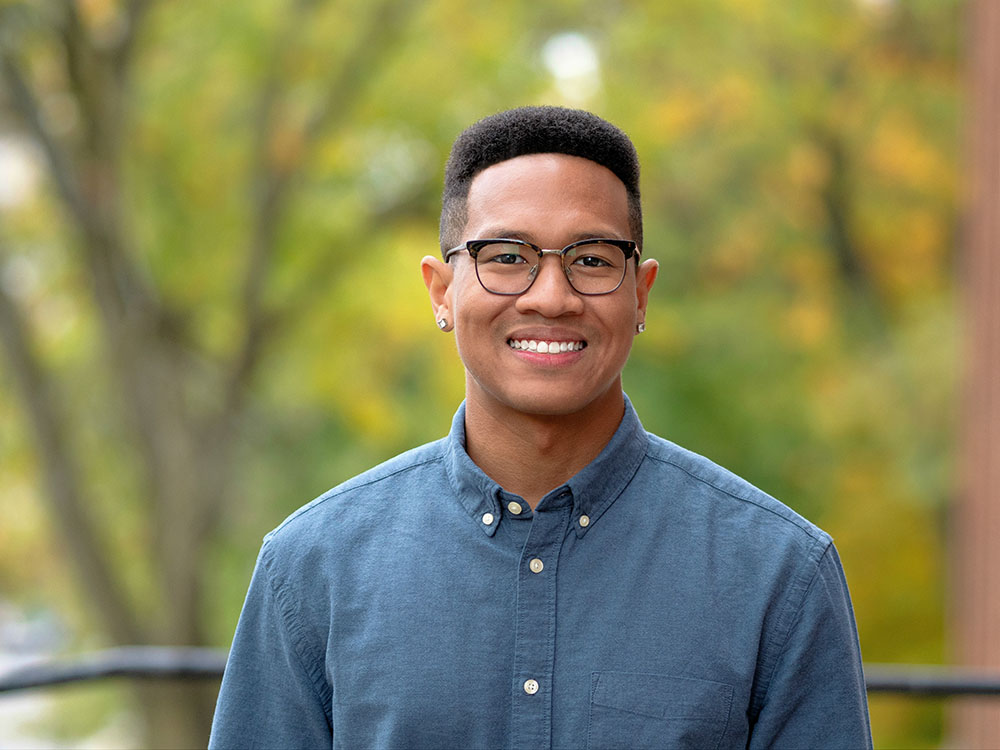Upcoming Project to Research Link between Tobacco Use and Discrimination

Q&A with Delvon Mattingly
PhD student in Epidemiology
Disparities in tobacco use exist by gender, race/ethnicity, sexual orientation, and socioeconomic status and these disparities remain a driving force for differential cancer incidence and mortality. The social determinants of tobacco use are particularly important to study because of the ways in which the tobacco industry targets marginalized and vulnerable populations, shaping and perpetuating disparities in tobacco use and long-term population health outcomes.
 The Center for the Assessment of Tobacco Regulations (CAsToR) was recently awarded
a diversity supplement to help conduct this research for the center’s Project 3: Modeling the Impact of Tobacco Control Policies on Polytobacco Use and Associated
Health Disparities. Delvon Mattingly, a PhD student in Epidemiology at the University of Michigan School of Public Health, is the recipient of the funding.
Mattingly, who is working with Nancy Fleischer, associate professor of Epidemiology
at Michigan Public Health and lead investigator for CAsToR Project 3, spoke about
his role on the project.
The Center for the Assessment of Tobacco Regulations (CAsToR) was recently awarded
a diversity supplement to help conduct this research for the center’s Project 3: Modeling the Impact of Tobacco Control Policies on Polytobacco Use and Associated
Health Disparities. Delvon Mattingly, a PhD student in Epidemiology at the University of Michigan School of Public Health, is the recipient of the funding.
Mattingly, who is working with Nancy Fleischer, associate professor of Epidemiology
at Michigan Public Health and lead investigator for CAsToR Project 3, spoke about
his role on the project.
How did you become interested in studying social determinants of tobacco use and other substances?
Mattingly: I received an opportunity to conduct research with the American Heart Association (AHA) Tobacco Regulation and Addiction Center through the University of Louisville Department of Communication in early 2017. The center was funded by the Tobacco Centers of Regulatory Science (TCORS), much like CAsToR. I worked with Project 3: Perception of Tobacco Use in Vulnerable Populations, and piloted two epidemiological studies that focused on behaviors, perceptions, and attitudes regarding e-cigarette and polytobacco use in Appalachian youth. Learning about differential patterns of tobacco use in marginalized populations and unveiling the sociocultural context which gives rise to such variation piqued my interest. The work led me to continue similar research here at the University of Michigan.
At a high level, what do we currently know about racial/ethnic minorities and tobacco use?
Mattingly: Factors that determine and influence tobacco use include:
- Personal reasons (perceptions, family, or friends)
- Environmental and cultural factors (predatory advertising and marketing strategies)
- Higher densities of tobacco retailers in areas with greater minority or low-income populations
- A historical context of endorsing product use in various communities by the tobacco industry (ex. higher amounts of tobacco advertisements in areas with larger populations of African Americans).
At a high level, cigarette smoking is most prevalent among American Indian/Alaskan Native populations, while menthol use disproportionately affects non-Hispanic Black populations. Non-Hispanic Blacks smoke at a similar prevalence as non-Hispanic Whites but are less likely to quit and are at higher risk for the negative health consequences of tobacco use. Forms of smokeless tobacco are generally used more by non-Hispanic White males, whereas cigars and cigarillos are predominantly used among non-Hispanic Blacks. Products such as hookah are growing in popularity and, similar to e-cigarettes, are commonly used among youth and young adults. E-cigarette use has grown rapidly in recent years, but there is still scientific uncertainty regarding the safety of e-products, as evidenced by the recent illnesses and deaths associated with vaping. Undetermined risk adds a level of complexity when trying to understand patterns and determinants of e-cigarette use.
Project 3 focuses on polytobacco use. What does that mean?
Mattingly: Polytobacco use can be defined as using multiple tobacco products at the same time. Research on the role discrimination plays in determining patterns of polytobacco use is limited, but is of growing interest in the tobacco field. Given the increase in new types of tobacco products (e.g., JUUL and IQOS), research on disparities in polytobacco use is warranted. Further, relative to single-product users, polytobacco users are at potentially greater risk for developing nicotine dependence and tobacco-related diseases, making them a priority group for investigation. One goal of the Center for the Assessment of Tobacco Regulations is to evaluate the public health impact of polytobacco use and tobacco regulations through simulation modeling to clarify tobacco-related health inequities and reduce associated disparities. Well-documented findings of determinants and disparities in polytobacco use are integral to the project’s success.
How will the funding help to further your work and that of the CAsToR center’s on social determinants of tobacco use?
Mattingly: The diversity supplement investigates the influence of perceived discrimination on patterns of tobacco product use and the moderating role of sociodemographic characteristics on this relationship. The project will help us better understand the relationship between discrimination and polytobacco use.
The work will build on my research interests of investigating the long-term health consequences of exposure to interpersonal and structural discrimination, while paying particularly close attention to how these determinants shape substance-related health disparities by factors, including: gender, race/ethnicity, and sexual orientation status. I'm also interested in the ways discrimination impacts different forms of substance use uptake and transitions over time.
